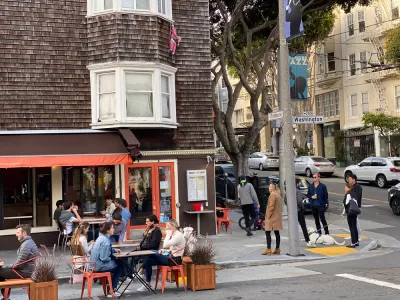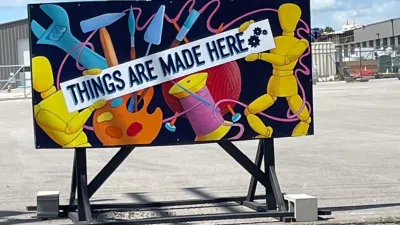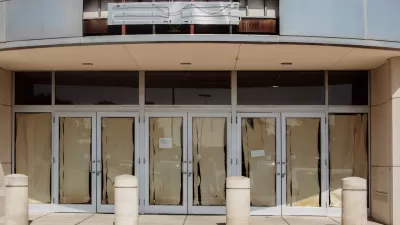While the labor shortage has affected businesses across the country, many communities have started taking steps to support area businesses and help them thrive.

With public health restrictions severely impacting businesses during the pandemic, a primary focus for city planners and developers is supporting local business growth during the labor shortage. According to Pew Research Center, 25% of Americans say they or a family member lost their jobs due to the COVID-19 outbreaks.
Many laborers and small businesses had to close their doors because they couldn’t pay their bills. City planners can help enterprises grow, even during a crisis.
Here are six solutions to helping local businesses.
1. Promote Local Businesses
Communication outreach provides the power to help businesses spread the word about their services. Planners can help local markets and individual retailers establish a virtual portal for online sales.
Another way to allow residents to discover open businesses is maintaining a list. Communities can learn about adjusted hours, while companies can also easily add themselves to the list.
Companies should also have the chance to promote available jobs. The skilled trades industry is finding it challenging to fill positions due to fewer trade workers, so permitting contractors to market themselves will reduce hiring barriers.
2. Provide Guidance and Information
Economic development, small businesses, chambers of commerce, and other local organizations can work together to offer technical guidance and information.
Businesses will need help understanding how to take advantage of state and federal stimulus funding. Additionally, they’ll need assistance working with lenders and making cash flow assessments to develop a growth plan.
Milwaukee provides COVID-19 Resources for Businesses, which lists information about steps to receive funding and grants at local, state, and federal levels.
3. Offer Financial Assistance
The most challenging aspect for small businesses is the significant reduction of cash flow. City planners can provide or communicate support with microgrant and microloan opportunities. The Wichita, Kansas, community utilizes PROPEL (Providing Resources and Opportunities for Proprietors, Entrepreneurs and Lenders) to fund up to $20,000 in small-business loans. So far, the citywide program outreach has been a huge success for growth and development.
Communities can provide funding with the cash influx they need by leveraging surplus funds and new sources.
4. Policy and Process Adjustments
Developers can support new approaches as businesses adapt to changes. They can create opportunities by being flexible in zoning, carrying out temporary loading zones for pickups, allowing "to-go" alcohol sales, and increasing movement in permitting and inspection processes.
Businesses find innovative ways to maintain operations by embracing and supporting these shifts.
5. Find Out About the Business Community’s Needs
A needs assessment is a strategic way of analyzing gaps in the local business community. Results from a needs assessment can ensure program development fills the voids through resources and services.
Planners should figure out exactly who to reach and ask about business owners’ pain points. Understanding the prominent issues is most helpful when calculating the next actionable steps.
Virtual town hall meetings and one-on-one outreach are good ways to determine how to serve their needs. Gathering feedback through surveys can also help planners strategize more efficiently.
6. Doing More Than Helping Retailers and Restaurants
Small manufacturers are shifting to making personal health care equipment for hospitals and front-line workers. Planners should consider going beyond retailer and hospitality businesses to support local companies with financial and technical assistance. The best way to help them is to link them with resources specific to their needs.
Great Things Happen When Supporting Local Businesses
The entire community benefits when businesses are supported. Uncertainty remains with the coronavirus pandemic, but changes in behaviors and planning will play a critical role in adaptation.
Planners should respond to business needs for them to survive this current disruption. That way, they can lay the foundation for a quicker recovery.

Planetizen Federal Action Tracker
A weekly monitor of how Trump’s orders and actions are impacting planners and planning in America.

Map: Where Senate Republicans Want to Sell Your Public Lands
For public land advocates, the Senate Republicans’ proposal to sell millions of acres of public land in the West is “the biggest fight of their careers.”

Restaurant Patios Were a Pandemic Win — Why Were They so Hard to Keep?
Social distancing requirements and changes in travel patterns prompted cities to pilot new uses for street and sidewalk space. Then it got complicated.

Maui's Vacation Rental Debate Turns Ugly
Verbal attacks, misinformation campaigns and fistfights plague a high-stakes debate to convert thousands of vacation rentals into long-term housing.

San Francisco Suspends Traffic Calming Amidst Record Deaths
Citing “a challenging fiscal landscape,” the city will cease the program on the heels of 42 traffic deaths, including 24 pedestrians.

California Homeless Arrests, Citations Spike After Ruling
An investigation reveals that anti-homeless actions increased up to 500% after Grants Pass v. Johnson — even in cities claiming no policy change.
Urban Design for Planners 1: Software Tools
This six-course series explores essential urban design concepts using open source software and equips planners with the tools they need to participate fully in the urban design process.
Planning for Universal Design
Learn the tools for implementing Universal Design in planning regulations.
Heyer Gruel & Associates PA
JM Goldson LLC
Custer County Colorado
City of Camden Redevelopment Agency
City of Astoria
Transportation Research & Education Center (TREC) at Portland State University
Camden Redevelopment Agency
City of Claremont
Municipality of Princeton (NJ)






























